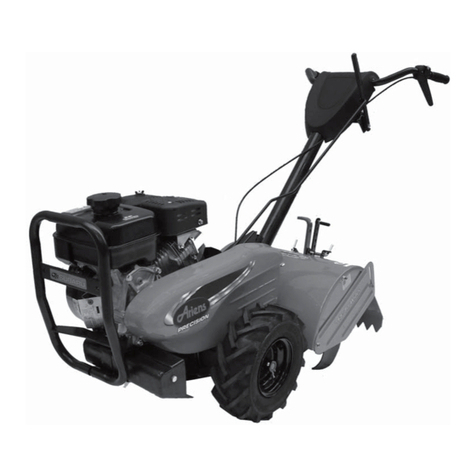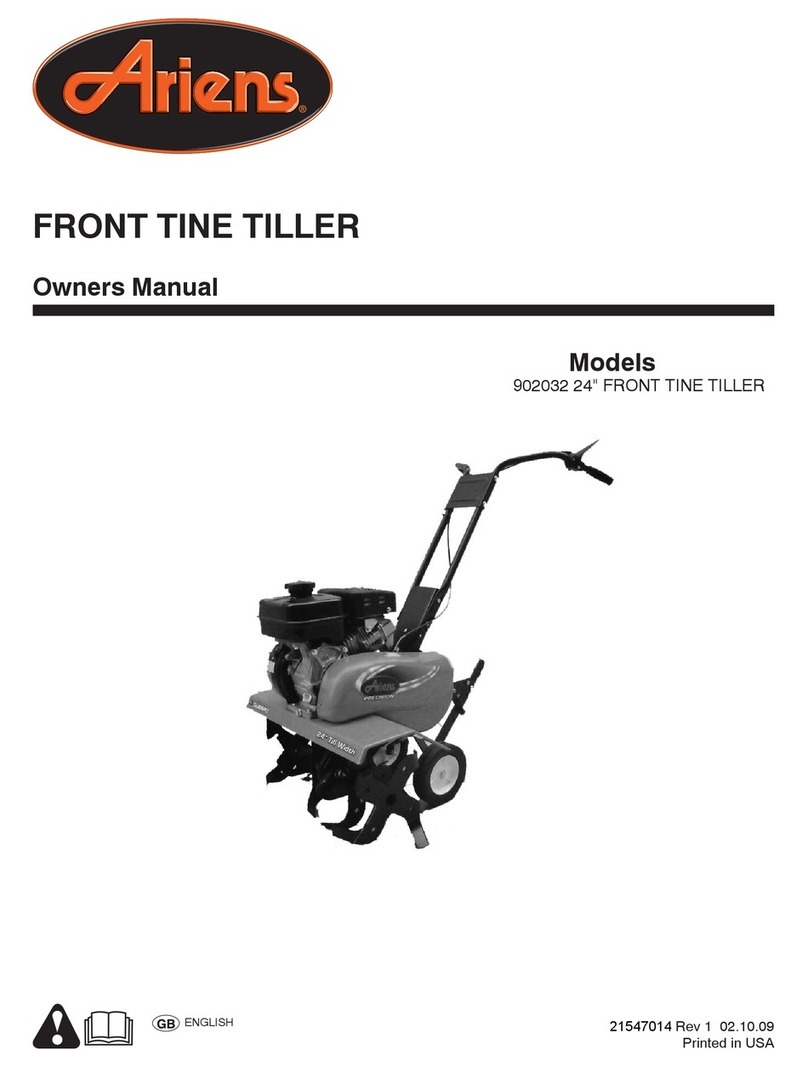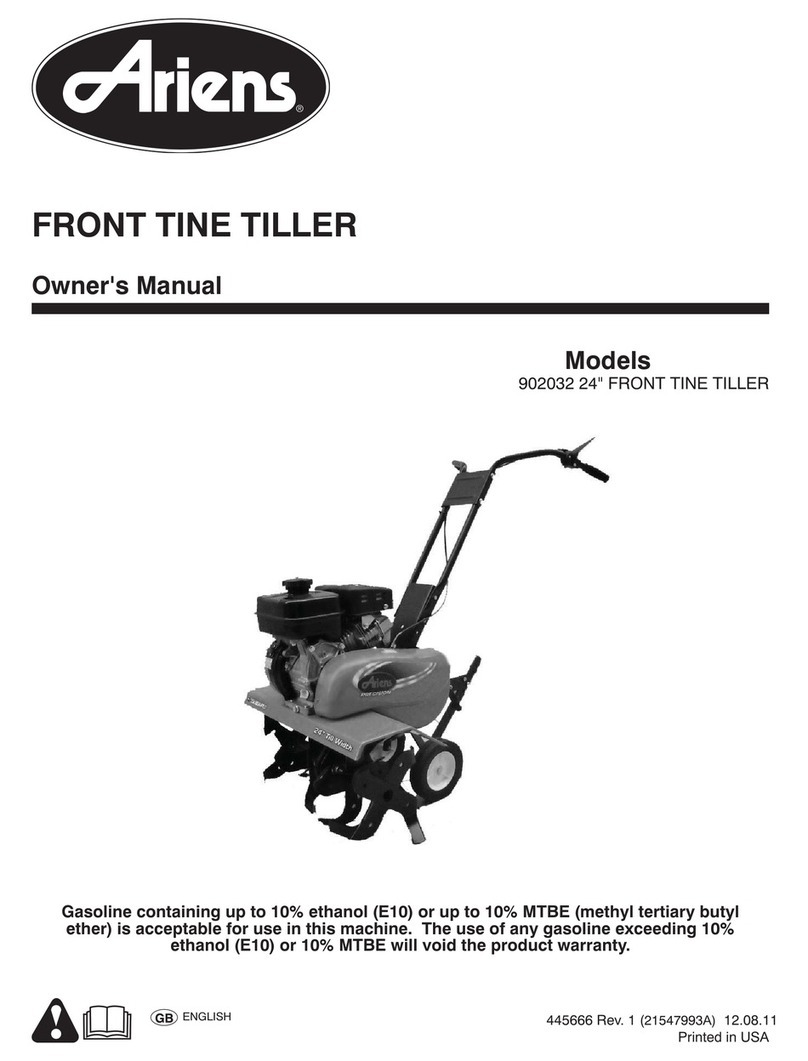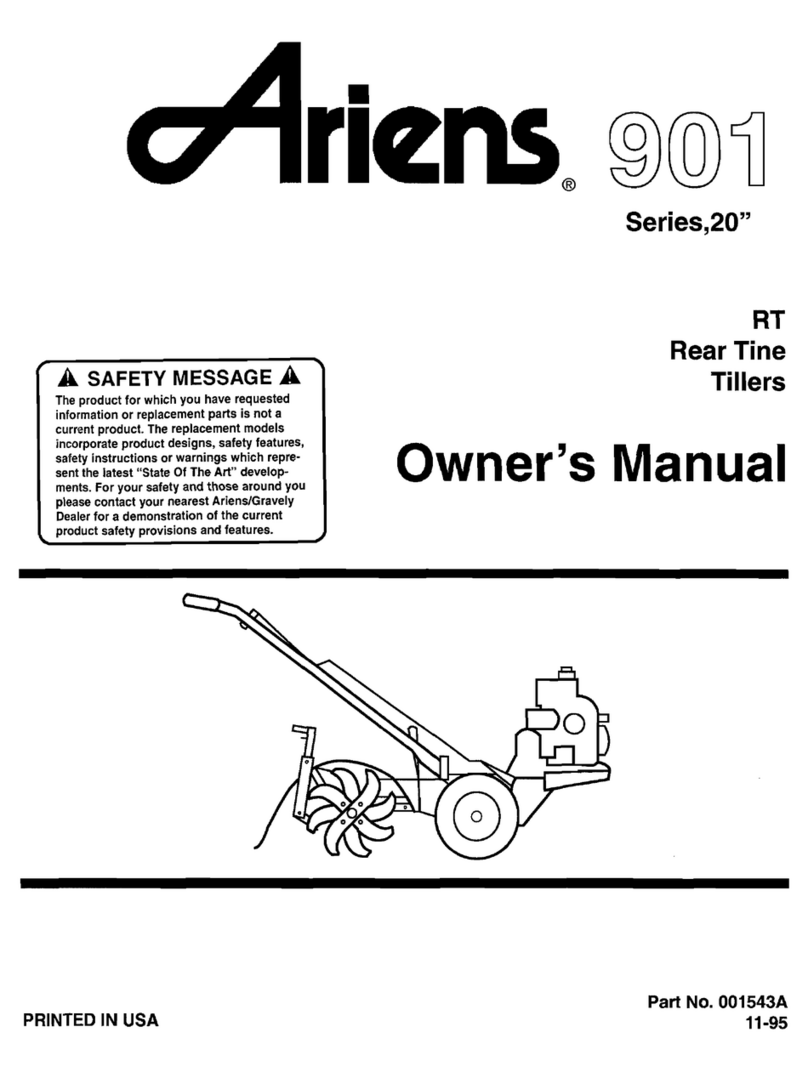2
Safety Precautions (Continued)
NOTE: This product is equipped with an internal
combustion type engine. Do not use unit on or near
any unimproved, forest-covered or brush-covered
land unless the exhaust system is equipped with a
spark arrester meeting applicable local, state or
federal laws. A spark arrester, if it is used, must be
maintained in effective working order by the operator.
See your Ariens Dealer or engine manufacturer’s
service center.
Operation
DO NOT put hands or feet near or under rotating
parts.
Operate tiller only in daylight or good artificial light.
Do not engage tine clutch unless wheel drive is
engaged. Tiller may run away propelled on the high
speed tines.
To begin tilling: lift up on handlebar so tines clear
ground, engage the main clutch, then slowly lower
tines into the soil.
Disengage main clutch, stop engine, wait for moving
parts to stop and remove wire to spark plug before
leaving the operators position, attempting to unclog
tines or make any repairs, adjustments and
inspections. (Except where specifically
recommended by manufacturer.)
Open doors if engine is run in garage or enclosed
areas, exhaust fumes are dangerous. DO NOT run
engine indoors without adequate ventilation.
NEVER allow anyone near unit while it is in
operation. Be familiar with area of operation.
Stay alert for holes, rocks, roots and hidden hazards
in area of operation.
Disengage power to tines when tiller is transported or
not in use.
Watch out for traffic when crossing or operating near
roadway.
DO NOT touch engine or tiller drive parts which are
hot from operation. Before attempting to maintain,
adjust or service allow such parts to cool.
If unit starts to vibrate abnormally, disengage Main
Clutch, stop engine, remove wire from spark plug and
check immediately for cause. Abnormal vibration is a
warning of trouble. Repair any damage before
restarting unit.
Disengage Main Clutch, stop engine, remove wire
from spark plug and inspect for damage after striking
a foreign object. Repair any damage before
restarting and operating tiller.
DO NOT overload tiller capacity by attempting to till
too deep as too fast a rate.
Tines contacting hard objects will cause rear of tiller
to lurch. If this occurs, let go of the handlebars and
do not restrain the unit. Never attempt to force tines
by hanging on handlebars. Let the machine do the
work - you control the machine.
NEVER operate tiller at high transport speeds on
slippery surfaces. Look behind and use care when
backing.
Take all possible precautions when leaving tiller
unattended; such as disengaging main and tine
clutch, stopping engine, removing wire from spark
plug and keeping wire away from plug to prevent
accidental starting or unauthorized use.
Maintenance and Storage
DO NOT change governor setting or overspeed
engine.
Keep tiller in good operating condition. Keep all
safety devices in place and functioning properly.
Ensure main clutch controls are functioning properly.
Wheels and tines must stop rotating when main
clutch levers are released.
Keep all nuts, bolts, and screws tight and be sure
equipment is in safe operating condition. Check
hardware and tiller at frequent regular intervals.
To reduce fire hazard and overheating, keep
equipment free of debris.
Never store tiller with gasoline in tank inside a
building where ignition sources are present such as
hot water and space heaters, clothes dryers, open
flame or spark, etc. Allow engine to cool before
storing in any enclosure.
Always refer to Owner’s Manual for important details

































